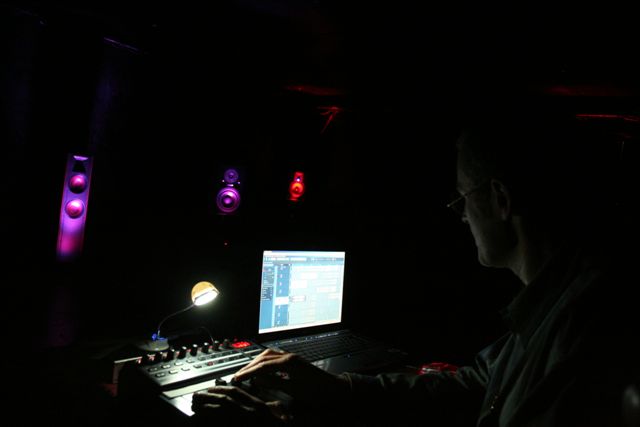
A P P R O A C H
I compose on a computer, mainly based on instrumental sounds.
My music is alternative (free of any kind of technical or predefined language). Electronic treatments, virtual or real instruments, field recording are mixed on works of expressionist style.
On my works there are very few ruptures, the music evolve by micro variations, as a continuum...as in the real world:
tension accumulations, loss of sense, complexity increase, anxiety or relaxations.
I work guided by the feeling created on myself by the sounds and also by my background of contemporary music listener, on all their diversity
(electro-acoustic, experimental, repetitive, serial music, minimalism, spectral, micro-tonal, noise but also progressive rock, opera, romantic music).
The electro-acoustic work allow me to reinforce some sensitive characteristics, but I don't want to loose the "context", to forget the original source of the sound.
On my work there are two directions:
The works I call «technical»: Here only the work "on the sound material" is important.
Other pieces are more « significant »: The theme is here the trigger of the work, and the technics have to "serve" this theme
Indeed, some pieces can associate or work through several musical styles (minimalism, electro-acoustic, noise, for example)
Technicalworks :
Metaccord (2005): Work on the meta-accord concept, for synthesizer.
Composition pour 60 oscillateurs (2007) : Work based on strong frequency variations
Expansion Spectrale (2007) : work on the spectrum of pure electronic sound
L’agonie (2007) : Work on the time: slowing down up to the final stop
Ataraxie-25 (2008): For 25 virtual instruments playing randomly.
oXymore (2008): Work on the extremes, the audible limits, for piano and strings
London 1848 (2008): Based on sounds recorded on a old piano
Ambitus (2008): Work based on the flow of random notes for virtual piano (modulation of the ambitus).
Homophonie (2008): Only one note of piano and his transformation by a synthesizer.
Cosmogonie (2008, pour 16 pistes de violoncelle) : "Built" on the basis of a set of cello sound recordings.
Etude pour piano désaccordé (2012) : Use as a basis a set of random notes played on a detuned piano.
Réminiscence (2012): Composed to illustrate the video « film for music » of Raphael Maze
Variations pour 8 La (2014) : Work for virtual piano, only based on LA, not edited
Cellophonie(2014): Electro-acoustic work for cello
Trois visions du temps(2014) : Work for percussions, not edited
Etude pour orchestre virtuel n°1(2015) : Not edited
Significants works :
Recordare (2007): On the theme of the big cathedrals and the religion.
Inoxophonie (2008, pour plaque d’inox) : An universe which built, grew up and complexify up to the excess and then is submerged by an apocalipse.
Symphonie pour un cycliste (2008): Anecdotal work on the cyclist world: from the immanence (the practice) to the transcendence (the myth of champion).
L’album Oratorio de l’indicible (2009) : Illustrating a set of fragments from the texts of HP Lovecraft.
Japon (2010): Anecdotal music: imaginary travel across the Japan: mix of traditions, nature and hyper-modernity.
Le Chant des Cendres (2011): On the theme of the colonisation.
Le Banc, Caramel Fondant, and the album Barrières (2011):Aa set of “romantic” works.
D’après Pangéa (2012): Imaginary travel based on the images of the film Pangéa of X Larroque (for which I composed the music).
Le cri (2012) : The existential anxiety.
Le Terrier (2012): Illustrating the Kafka novel. Not edited
Le Crépuscule des Idoles (2012) : Nietzsche.
Les Lumières (2012) : The first globalisation, of the ideas.
Mondialisation et Post Mondialisation (2013) : A senseless world (Cf Heidegger).
La bulle (2013) : Metaphors on the impermanence of all systems.
Requiem pour un alpiniste (2014): Work for big organ and mountains sounds (not edited)